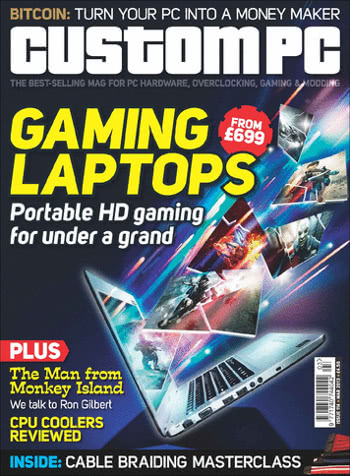
Designed to do for desktops what the Ultrabook project is doing for laptops, Intel’s NUC is an impressive creation: measuring a mere 10cm on a side, the ultra-compact design packs a Intel Core i3 3217U dual-core processor running at 1.8GHz into a box the size of which would traditionally have required a low-power Atom, AMD APU or ARM processor. Coupled with support for up to 16GB of RAM, two mini PCI Express slots and both HDMI and Thunderbolt display connectivity, it’s an exciting entry into a market Intel has traditionally eschewed.
To find out what Intel’s plans were for the project, how it came about and what the NUC can really offer over other ultra-compact embedded computing systems, I spoke to Intel’s John Deatherage, director of the company’s Client Boards Division.
While Deatherage didn’t call out ARM by name during the interview, his comments on the compatibility of the x86-64 architecture processor at the heart of the NUC said plenty about Intel’s feelings regarding the Cambridge-based low-power processor specialist.
The main advantage of the NUC is the fact it is a fully scalable computing system, with our first version running a third-generation Core i3 with full HD Graphics capabilities running x86 code. There are no limitations in terms of software, driver compatibility, or performance that some would expect given the size of the system.
Interestingly, Intel is choosing to launch the NUC into the market as an own-brand product, as well as allowing its processor customers to licence the design and build their own NUC devices. It’s a move Intel has avoided in the past, but one Deatherage explained away as “just one way to enter the market quickly.”
The NUC is a niche product, for sure: while it draws less power and takes up less space than a traditional desktop, it’s also significantly more expensive. While it could make headway in the digital signage market, these customers rarely care much about x86 compatibility or raw performance – if you’ve ever travelled by train in the UK, you’ll be familiar with digital noticeboards and timetables which can be clearly seen to be running a web browser somebody forgot to put into full-screen mode.
To find out what issues Intel had shrinking its desktop technology into such a small form factor, its hopes for the system and whether it could form the basis of a new Steam Box-like games console, pick up the latest Custom PC from your favourite newsagent or supermarket, or grab it in the form of a vast collection of zeros and ones through Zinio.
